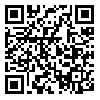Volume 20, Issue 1 (6-2022)
sjsph 2022, 20(1): 69-80 |
Back to browse issues page
Download citation:
BibTeX | RIS | EndNote | Medlars | ProCite | Reference Manager | RefWorks
Send citation to:



BibTeX | RIS | EndNote | Medlars | ProCite | Reference Manager | RefWorks
Send citation to:
Torkmani H, Ghasemi Motlagh M, Ismaili Shad B, Mohammadipour M. Predicting the Tendency of the University Students to Addiction: The Role of Initial Maladaptive Schemas and Emotion Cognitive Regulation. sjsph 2022; 20 (1) :69-80
URL: http://sjsph.tums.ac.ir/article-1-6110-en.html
URL: http://sjsph.tums.ac.ir/article-1-6110-en.html
1- Ph.D. Student, Department of General Psychology, Bojnourd Branch, Islamic Azad University, Bojnourd, Iran
2- Ph.D. Assistant Professor, Department of Psychology, Bojnourd Branch, Islamic Azad University, Bojnourd, Iran
3- Ph.D. Assistant Professor, Department of Educational Sciences, Bojnourd Branch, Islamic Azad University, Bojnourd, Iran
4- Ph.D. Associate Professor, Department of Psychology, Quchan Branch, Islamic Azad University, Quchan, Iran
2- Ph.D. Assistant Professor, Department of Psychology, Bojnourd Branch, Islamic Azad University, Bojnourd, Iran
3- Ph.D. Assistant Professor, Department of Educational Sciences, Bojnourd Branch, Islamic Azad University, Bojnourd, Iran
4- Ph.D. Associate Professor, Department of Psychology, Quchan Branch, Islamic Azad University, Quchan, Iran
Abstract: (1433 Views)
Background and Aim: Considering the harms and dangers of addiction and the fact that many people are trapped in it every day, it is important to identify the variables that affect it. The aim of this study was to predict the tendency to addiction among university students based on initial maladaptive schemas and cognitive emotion regulation.
Materials and Methods: This was a cross-sectional descriptive-analytical study. The statistical population consisted of all the 3548 students of Gonbad Kavous Payame-Noor University in the academic year 2019-20, from among whom a sample of 384 students was selected using the one-stage cluster random sampling method. The data collection tools were the following 3 questionnaires: early maladaptive schema (Young, 2005), cognitive emotion regulation (Garnefski & Kraaij, 2001) and addiction tendency (Wade and Butcher, 1992). Pearson correlation coefficient and multiple linear regression were used to analyze the data using the SPSS software version 22 at a statistical significance level of 0.05.
Results: Data analysis showed correlations between addiction and the following variables: excessive ringing in the ears (r = 0.491, p = 0.001), being guided by others (r = 0.523, p = 0.001), disturbed constraints (0.001 >, r = 0.426 p), impaired function (r = 0.389, p = 0.001), discontinuation (r = 0.406, p <0.001) and cognitive emotion regulation (p> 475, <0.001). 0r =). In addition, the results of multiple linear regression analysis showed the following: excessive ringing (β= 0.203, p = 0.001), being guided by others (β= 0.274, p = 0.001), disturbed constraints (β= 0.261, p = 0.001), impaired function (β= 0.229, p = 0.001), discontinuation (β= 0.193, p <0.001) and cognitive emotion regulation (β= 0.315, p = 0.001).
Conclusion: Based on the findings of this study, the average tendency to addiction among university students can be predicted by changing the initial maladaptive schemas and improving the cognitive emotional regulation.
Materials and Methods: This was a cross-sectional descriptive-analytical study. The statistical population consisted of all the 3548 students of Gonbad Kavous Payame-Noor University in the academic year 2019-20, from among whom a sample of 384 students was selected using the one-stage cluster random sampling method. The data collection tools were the following 3 questionnaires: early maladaptive schema (Young, 2005), cognitive emotion regulation (Garnefski & Kraaij, 2001) and addiction tendency (Wade and Butcher, 1992). Pearson correlation coefficient and multiple linear regression were used to analyze the data using the SPSS software version 22 at a statistical significance level of 0.05.
Results: Data analysis showed correlations between addiction and the following variables: excessive ringing in the ears (r = 0.491, p = 0.001), being guided by others (r = 0.523, p = 0.001), disturbed constraints (0.001 >, r = 0.426 p), impaired function (r = 0.389, p = 0.001), discontinuation (r = 0.406, p <0.001) and cognitive emotion regulation (p> 475, <0.001). 0r =). In addition, the results of multiple linear regression analysis showed the following: excessive ringing (β= 0.203, p = 0.001), being guided by others (β= 0.274, p = 0.001), disturbed constraints (β= 0.261, p = 0.001), impaired function (β= 0.229, p = 0.001), discontinuation (β= 0.193, p <0.001) and cognitive emotion regulation (β= 0.315, p = 0.001).
Conclusion: Based on the findings of this study, the average tendency to addiction among university students can be predicted by changing the initial maladaptive schemas and improving the cognitive emotional regulation.
Type of Study: Research |
Subject:
Public Health
Received: 2022/09/7 | Accepted: 2022/06/21 | Published: 2022/06/21
Received: 2022/09/7 | Accepted: 2022/06/21 | Published: 2022/06/21
| Rights and permissions | |
 |
This work is licensed under a Creative Commons Attribution-NonCommercial 4.0 International License. |





